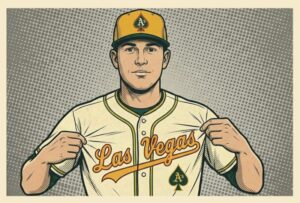When Nolan Ryan walked off the mound for a final time in the major leagues, he knew it was the end. How did the orchestrator of seven no-hitters know that? Because his right shoulder basically blew apart on his final pitch.
Ryan walked off the field and into the history books in 1993 after a dreadful performance where he failed to record an out, walked four batters, allowed two hits, including a home run. On his final pitch, one of his patented fastballs, Ryan felt a horrible pain in his shoulder. As he walked to the dugout, his famous arm hung awkwardly from his body.
This season, Justin Verlander has spent more than two months on the injured list starting in June, before reappearing in the Astros’ rotation late in August. But he’s been far from “Must-See JV” for Houston, posting a dreadful 9.72 ERA in four starts. On Sunday, he was pounded for eight runs in three innings. As he got lit up, Verlander seemed bewildered. He may have been thinking:
Is this the end?
No pitcher in baseball history is as decorated with hardware as Verlander. He’s the only player to win the Rookie of the Year, Cy Young, Most Valuable Player, League Championship MVP, and Comeback Player of the Year Award. He has three no-hitters on his record, and ranks in the top ten in strikeouts. He’s a two-time World Series champion.
Yet, at 41 years of age, it’s impossible to view Verlander’s recent struggles through a narrow prism. The mileage on his arm begs the question: is this the final act of one of baseball’s greatest pitchers?
Verlander has one Tommy John Surgery on his medical record. He made only one start in the 2020 and 2021 seasons combined. Amazingly, he came back in 2022 and won 18 games while leading the league in ERA. As a result, he won his third Cy Young Award. That October, he and the Astros won the World Series.
At 40, Verlander pitched well in 2023, and factored in Houston’s resurgence to capture the AL West crown again, after he was acquired from the Mets.
Verlander has made it clear he wishes to pitch long enough to win 300 games. But with his struggles in 2024, it appears nearly impossible for JV to get the 40 additional wins he needs. At this point, one wonders f he can get four more wins.
Verlander’s velocity has been in his normal range, topping out in the high-90s in his starts since coming off the IL in late August. But, his heater has not fooled opposing batters. The location of his supporting pitches has not been good. The swagger and confidence, always so much a part of Verlander’s aura, is missing.
“I have to find something in the bullpen,” Verlander said after his start against Cincinnati on September 2. In that outing, he allowed five earned runs and 12 base runners in only 4 2/3 innings,
Power pitching is the bread and butter of MLB staffs today. Every team has multiple pitchers who can reach 100 miles per hour. Many big league throwers can toss a slider nearly that fast. But it comes with a cost: injuries and the death of the dominant starting pitcher.
There was a time when Greg Maddux, Randy Johnson, Curt Schilling, and others went to the mound intent on going at least eight innings. The job of the starter was to chew up innings, mow down batters, and “own” that game. In the era of analytics, that’s no longer the case. Starters are now largely just the first cog in a procession of pitchers the manager uses to get the 27 outs needed for a victory.
Verlander is a dinosaur: a power pitcher who went deep into games. At one point in 2011-12, when he was with Detroit, Verlander pitched into the seventh inning in 44 out of 46 starts. He went 22 straight starts where he pitched into the sixth or later, and was never removed in the middle of an inning.
But now, a starter is asked to merely get 15 outs, if that. The Era of Pitching has been replaced with the Era of Load Management. Some teams are happy if their starter goes three innings. These are not the days of Nolan Ryan.
When Verlander got to the major leagues in 2005, he explained that Ryan and Roger Clemens were the pitchers he most modeled himself after. He quickly set goals to become the best pitcher in the game, to reach milestones. His place in history is secure all these years later. He could be remembered mostly as the last of the workhorse starting pitchers.
Even the greatest players eventually become “just another guy in a uniform.” Willie Mays got old. George Brett couldn’t get around on the fastball. The lightning bolts stopped emerging from the left shoulder of Randy Johnson. Miguel Cabrera became average.
Is this recent spell of mediocrity just a slump, or is Verlander facing his own reality? He’ll have a few starts in the regular season to work it out, and maybe one in the playoffs. For his sake, and that of baseball fans, let’s hope the legend has a few more great moments remaining.
Time is undefeated. Verlander may be learning that sobering fact.







